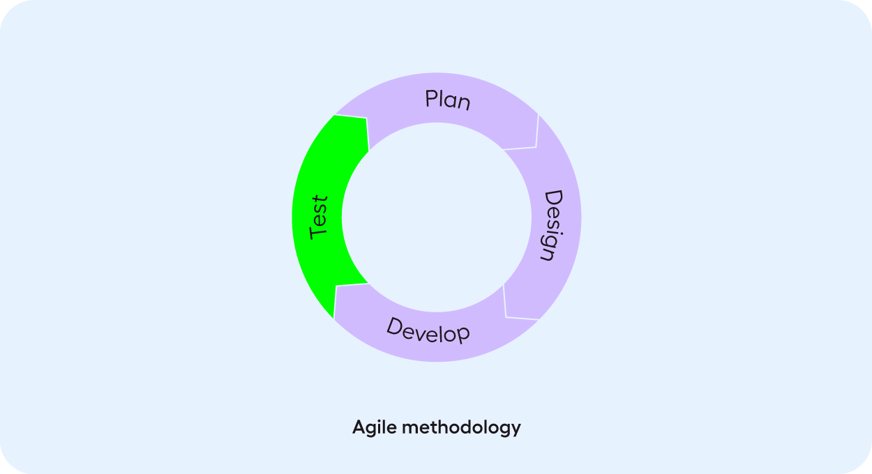Why You Should Automate Software Testing
Software testing is a key part of the software development lifecycle (SDLC), but with increased attention towards quality assurance (QA), old methods of software testing can’t speed up software releases and ensure a good user experience.
Smaller budgets and a push for faster deliveries have fueled the need for better approaches to development and testing.
Test automation is part of the solution.
What is software testing?
Software testing is the method of checking software and business-dependent applications (like Salesforce and SAP) for vulnerabilities before they reach a live environment.
By testing, you ensure that a software or application is working as it should with every update and new feature release.
There are lots of approaches to software testing.
From waterfall models that place testing at the far right of the SDLC.

To agile testing which pulls testing earlier in the SDLC, and happens in smaller increments.

While traditional models like waterfall can work with manual testing (all be it at a very slow pace), agile testing can’t work without test automation.
So why is automation testing needed, and why is it better than manual?
Benefits of automation testing over manual testing.
Important note: when referring to automation in this post, we’re not referring to unit tests, we’re referring to functional regression testing and end-to-end functional UI testing.
There is no doubt that manual testing is core to setting the guidelines for good tests before regression testing.
However, it is very resource heavy and requires a lot of time and energy, often leading to testers becoming overwhelmed. It also prevents development projects from moving quickly.
This is where test automation comes in. Automation supports testers by minimizing the number of repetitive tests such as regression testing. Once defined, an automated test case can be run again and again without requiring additional time for testers.
So in what ways is automation testing better than manual testing?
Related reading: 9 Test Automation Benefits
Flexibility
- Manual testing. Faster sign-offs on features, but a decrease in flexibility with a higher workload.
- Test automation. More flexibility with the ability to build test automation on a sprint-by-sprint basis.
Regression testing
- Manual testing. Time-consuming and prone to human error. Impossible to keep up as a regression suite grows.
- Test automation. Can run 24/7. Once built, they can be reused indefinitely (maintainability will vary depending on whether you’re using a code-based, low-code, or codeless tool. Read more in our post on how to do regression testing faster).
Scaling testing
- Manual testing. More testing = more people = more hours = more expenses.
- Test automation. The ability to run more tests with fewer resources. The speed at which you can scale automation will also depend on the type of automation tool chosen.
Related reading: Best practices for maintainable and scalable test automation.
Automated testing tools in software testing
Automation can speed up the software development lifecycle, but many testing strategies that adopt automation get lost in the maintenance burden.
The maintenance burden refers to the mounting updates that have to be made to code-based and low-code test frameworks. Every time a change is made on the user interface, test scripts have to be updated too. As a regression testing suite grows, the burden of updating these test scripts becomes impossible to maintain.
So how can you avoid this maintenance burden when starting out with, or choosing a new test automation tool?

From code-based, to low-code and no-code, what automation solution will bring your team and the business the most value?
In this guide, Leapwork outlines what you should look for in a testing tool for faster testing, and higher quality software.

